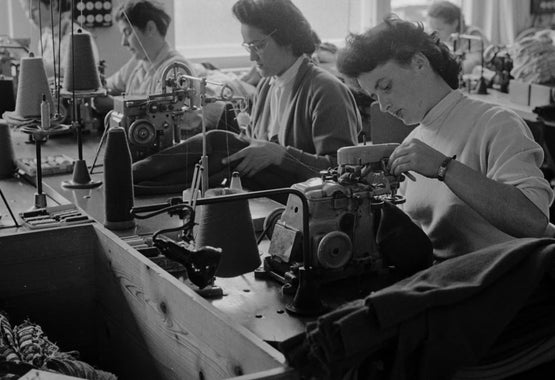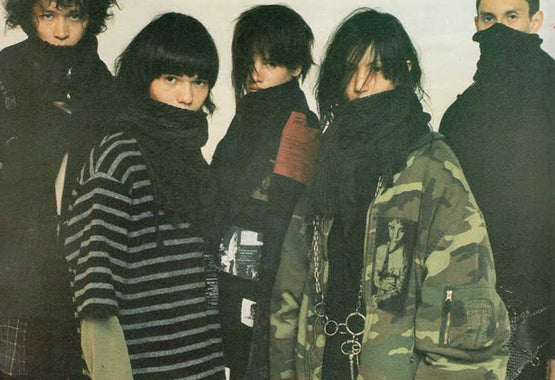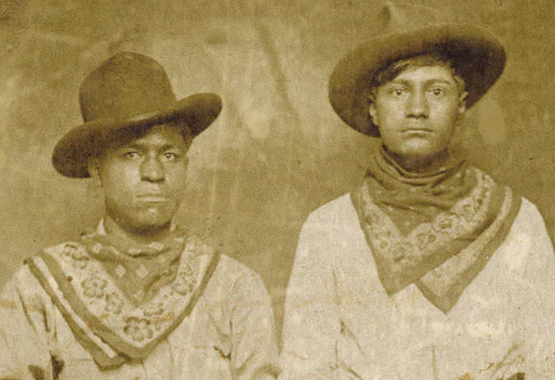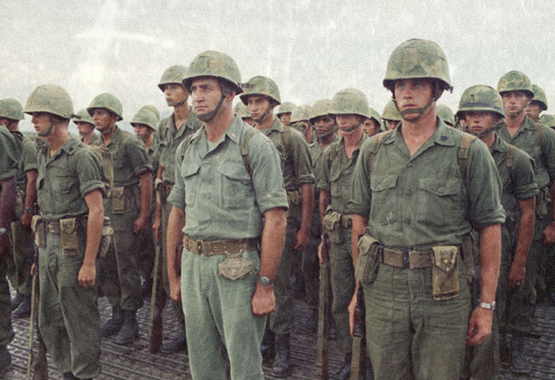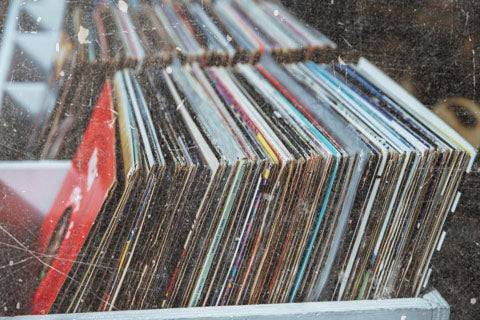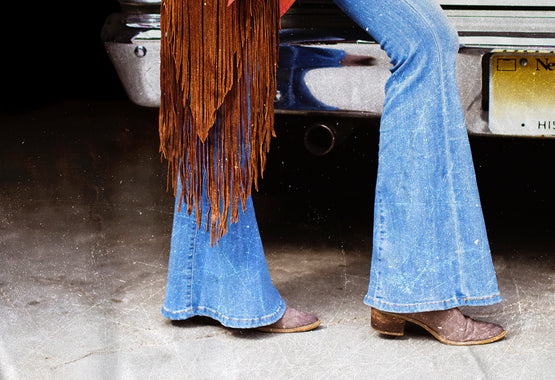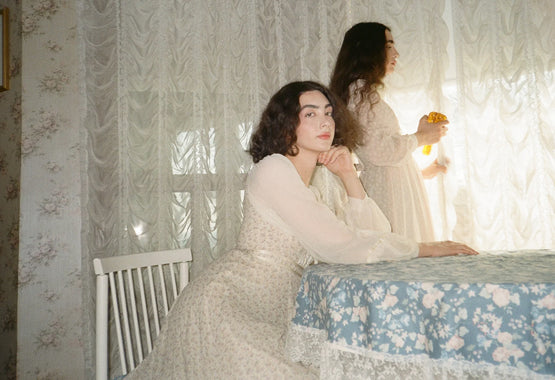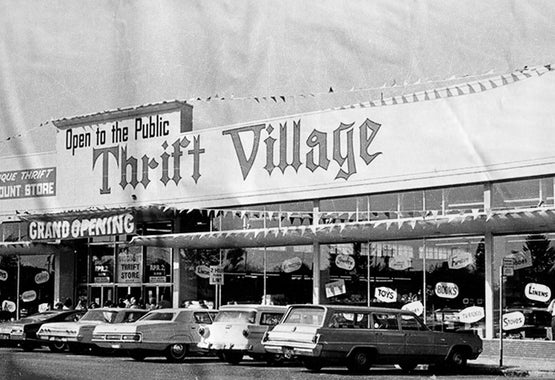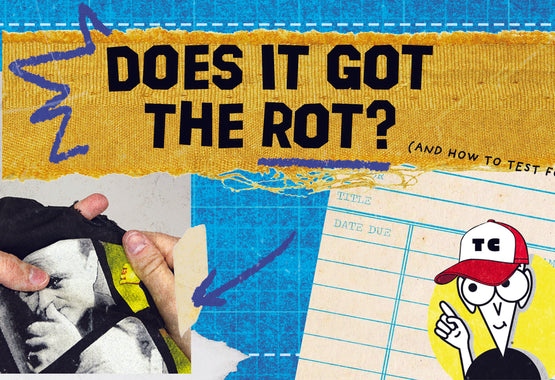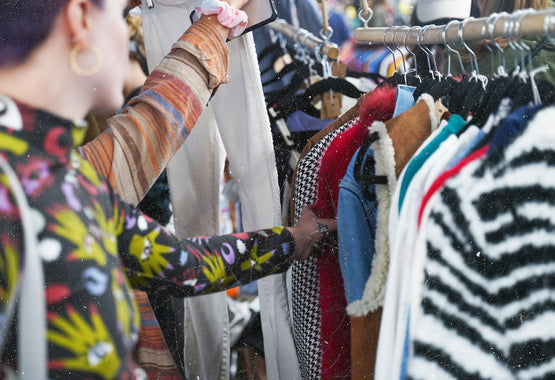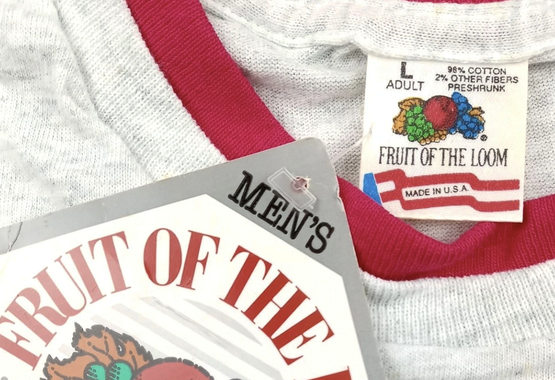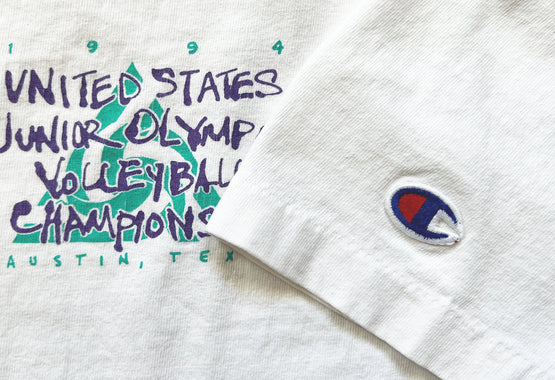Where Flares, Bells And Boot Cut Bottoms Actually Come From
[written by Thomas Starr // cover photo Hippie Shop]
An excess of fabric has returned to ankles around the fashion world. Whatever you want to call them — boot cuts, bell bottoms, or just plain ol’ flares — the iconic pants of '60s counterculture and '70s disco are back. Yet the origins of these wide-legged pants pre-date rock n’ roll and disco by over 100 years. Like many other fashion staples, flares originate not in high-end design studios, but as workwear essentials.
The origins of bell bottoms can be traced back to the 18th and 19th century, when naval sailors began wearing flares as part of their uniforms. It’s believed that the style was adopted so that sailors would be better able to roll up their pants when wet and muddy and more easily rescued should they fall overboard. Additionally, the large leg openings allowed them to be removed over shoes and used as a flotation device in the water. These naval flares can still be found secondhand today, as they remained on the legs of sailors throughout the 19th and early 20th century, only achieving widespread popularity amongst civilians in the 1960s.

In the 60s, the British and American counterculture movement was in full swing, with one key belief being a rejection of mainstream consumerism. As such, young people began shopping for clothing from Army Surplus stores, where they found the flared pants worn by sailors. The style was soon adopted, spreading from surplus Army uniforms and becoming the pant of choice among the youth and the fashion forward, such as Jimi Hendrix, Mick Jagger and Cher. Given the revolutionary political nature of this era, the pants would become associated with movements across the globe.

Countless brands followed the trend as well, perhaps most notably Levi’s, whose experimental, fashion-focused Orange Tab line produced the 517, 646 and 684 cut jeans — both of which feature a distinct flare from the knee down. The classic denim brand still produces the 517 today. The 646 and 684 can only be found in vintage condition. Both models are in high demand currently and fetch a high price as the trends of the '70s continue to be popular today.

Bell bottoms would also become the go-to pants for followers of the disco scene in the 1970s, the era with which they’re most commonly associated now. Worn in combination with Cuban heeled boots and often a matching blazer, bell bottomed trousers were a must for the dance floor circa 1974. Films such as Saturday Night Fever and Car Wash reflect this era perfectly, as do classic bands like the Beejees and Abba. A disco suit just wouldn’t be complete without a nice wide flare from the knee down. While flares still remained a go-to pant to just about anyone in the '70s, the disco community truly embraced them as part of their identity.
Far and away the dominant pant style of the '60s and '70s, lasting from hippies to glam rock to disco, flares fell out of style in the 1980s. It wouldn’t be until the '90s that they came back into style, this time in the form of “boot-cut” jeans, often with low waists. This trend would continue to pick up steam into the 2000s, with the Y2K era dominated by low-waisted bell bottoms and baggy boot-cut jeans. Brands like JNCO, founded in 1985, and True Religion, founded in 2002, exemplify this style and remain popular today.

Currently, flares of all types are having a bit of a moment. The trend cycles have aligned such that the '70s and Y2K are both in style at the same time, bringing with them flares of all sorts. While the Y2K style has been in for a good few years, the '70s aesthetic trend is only a year or two old (meaning that it's likely at its peak). This is evident by the overwhelming number of men in cropped shirts and flared jeans on TikTok posts and Pinterest feeds around the world. The “bellboys” have taken the fashion world by storm, obviously earning their moniker from their bell-bottom jeans. Womenswear is no different, as flared and boot-cut pants continue to be incredibly popular amongst the ladies too.
Over the past 200 or so years, flared pants have gone from a niche naval uniform piece to era-defining fashion icons. From disco to Y2K, western to grunge, so many aesthetics feature flares prominently, so it's no surprise they continue to come into fashion over and over again. While the trend is sure to not last forever, wide leg openings are certainly the style of the early 2020s, meaning that now is the perfect time to grab a pair of vintage flares and let those ankles breathe.

